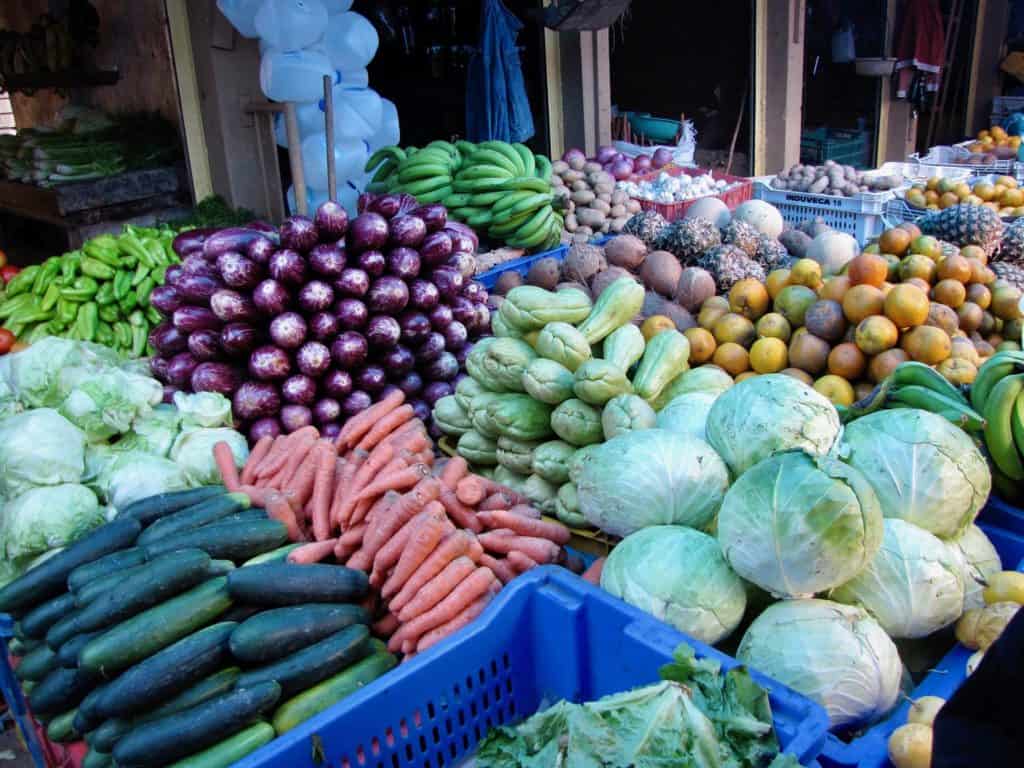While the recent spike in the cost of fresh produce and other food items can be attributed to the covid19 pandemic and Russia-Ukraine war, consumers are also being asked to consider the role of climate change in these rising costs.
In a recent interview, climate specialist Ryan Assiu said people may be aware that extreme weather events associated with climate change – extreme rainfall, droughts and temperature changes – can affect agriculture and food production.
But he explained the phenomenon also indirectly affects agricultural activities.
A changing climate alters ecosystems which can lead to an increase in pests and a proliferation of crop diseases.
Given the correlation between climate and agriculture, Assiu said there is a need to increase the resiliency of farmers.

The effects of climate change on Guyanese farmers
Even though climate change is a global issue, small island developing states (SIDs) like Guyana are more vulnerable to its effects due to their geographic characteristics and economic vulnerabilities.
Guyanese farmer Devon Mc Kenzie agrees with Assiu and said the effects of climate change on Guyana’s East Bank have been noticeable in the past several years.
With farmlands in Guyana’s Good Success region and Friendship Village, Mc Kenzie explained torrential rain often causes extensive flooding in the area due to insufficient drainage.
He added pests have also become a threat to the productivity and profitability of his agricultural activities especially during floods.

With the frequent disruption of Mc Kenize’s activities, and that of other farmers, he said this leads to a decrease in fresh produce which in turn results in an increase in demand and the price of produce.
Considering climate change and other factors, Mc Kenzie warned, “They’re going to see much more rise in the price of food in Guyana, coming next year.
“Everything is at an all-time high… fertilizer, oil and gas on the market, drugs and even labor.
“Farmers cannot afford to plant on their farm, and for the few crops that will be coming, prices will be high.”

Guyana School for Agriculture (GSA) lecturer Colin Timmerman has also observed similar effects.
Responsible for the development and management of a farm at GSA, Timmerman said his ability to grow certain crops have been affected due to the unpredictability of weather patterns.
For example, he recently delayed planting some crops in 2022 due to excessive rainfall.
Timmerman claimed Guyana has a lack of proper agriculture zoning which has an overall effect on the country’s ability to mitigate the effects of a changing climate.
He also claimed there are instances where farmers were given land in low-lying areas that are susceptible to saltwater intrusion in light of rising sea levels and increasing coastal flooding.
He added, “In Guyana – to a larger extent – farming is done haphazardly. A farmer gets a piece of land and he just farms.
“So the area might not be the best area for farming and they are just doing it.
“Climate change has made that more difficult, because with the increase of flooding his land is low and he has to build it up.”

Unsustainable farming contributes to climate change
Studies by the Intergovernmental Panel on Climate Change (IPCC) have shown agriculture contributes to global carbon and non-carbon emissions.
Apart from animals releasing, pesticides and fertilisers also contribute to emissions.
While Timmerman thinks the use of fertilisers and pesticides cannot be completely stopped, he said efforts can be made to control their use.
He explained, “From time-to-time farmers will have to use some form of pesticide.
“But the issue is how much they use, if it is being used in a sustainable manner and if the use is being monitored by the Pesticide Board or maybe the National Agricultural Research & Extension Institute (NAREI).”
“The Pesticide Board has regulations but in my opinion they don’t have the capabilities to monitor farmers.”
Timmerman added more effective enforcement of regulations should include more stringent fines.

Efforts underway in Guyana to reduce agriculture’s impact on climate
Regardless of the country, Assiu said there is importance in farmers adopting sustainable alternatives to traditional agriculture methods.
Agroforestry, permaculture, hydroponics, container farming, and vertical greenhouses, are all effective methods given they focus on sustainability, self-sufficiency, efficient resource use and soil health.
Traditional methods can be retained where necessary but there must be a focus on reducing environmental effects.
Assiu added, “Every country would have their strategy but generally we need to move the agriculture sector to what we believe as climate smart agriculture.
“This means Agriculture which is going to be resilient to climate change but also mitigate the drivers of climate change.”

Head of Guyana’s Coastal Extension Unit Eon Sampson said NAREI has been making strides to ensure the country’s agricultural sector is more environmentally sustainable.
Sampson said the institute is promoting climate smart agriculture and efforts are underway to integrate shade house cultivation in various farming communities.
In drought prone areas, drip irrigation systems are being used and farmers are being encouraged to use raised beds in open fields.
He added collaborative efforts are also being made to ensure there is proper farmland zoning throughout the country.
In an effort to play his part in steering Guyana’s agriculture towards greater sustainability, McKenzie is using mitigation, resilience and adaptation strategies.
His efforts include shading houses on his farms and establishing several wells on his farms to store water in the event of droughts and water shortages.
To provide some relief for rising food prices, Mc Kenzie calls on people to start kitchen gardens around their homes.

This story was published with the support of The Cropper Foundation and Climate Tracker’s Caribbean Citizen Climate Journalism Fellowship.





